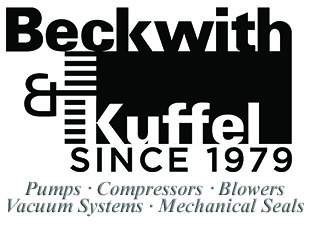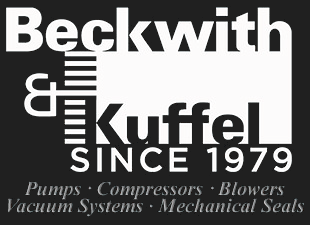B. Stationary Shaft
This type of design typically uses non-metallic components such as ceramics and plastics. It is best suited for light to medium duty applications. The stationary shaft design significantly reduces the number of parts required, simplifying maintenance and reducing cost. Corrosion resistant materials such as silicon carbide ceramics and fluoropolymer plastics (Teflon, Tefzel, etc.) provide excellent range of application. The use of plastics materials does, however, limit the temperature range of these designs to 200oF to 250o F. (Refer to Model 3298, Section CHEM-3C). Containment Shell Designs
The containment shell is the pressure containing barrier which is fitted between the drive and the driven magnet assembly. It must contain full working pressure of the pump, since it isolates the pumped liquid from the atmosphere. One-piece formed shells offer the best reliability, eliminating welds used for two-piece shells. Since the torque coupling magnetic force field must pass through the shell, it must be made of a non-magnetic material. Non-magnetic metals such as Hastelloy and 316SS are typical choices for the containment shell. The motion of the magnets past an electrically conductive containment shell produces eddy currents, which generate heat and must be removed by a process fluid recirculation circuit. The eddy currents also create a horsepower loss, which reduces the efficiency of the pump. Metals with low electrical conductivity have lower eddy current losses, providing superior pump efficiency. Hastelloy has a relatively low electrical conductivity and good corrosion resistance, thus is an excellent choice for metal containment shells. Electrically non-conductive materials such as plastic and ceramics are also good choices for containment shells, since the eddy current losses are totally eliminated. This results in pump efficiencies equal to conventionally sealed pumps. Plastic containment shells are generally limited to lower pressures and temperatures due to the limited strength of plastics.
Sleeve and Thrust Bearings
Magnetic drive pumps utilize process lubricated bearings to support the inner drive rotor. These bearings are subject to the corrosive nature of the liquids being pumped, thus need to be made from corrosion resistant materials. Two commonly used materials are hard carbon and silicon carbide (SIC). Pure sintered SIC is superior to reaction bonded SIC, since reaction bonded SIC has free silicon left in the matrix, resulting in lower chemical resistance and lower strength.
Hard carbon against silicon carbide offers excellent service life for many chemical applications and also offers the advantage of short term operation in marginal lubrication conditions.
Silicon carbide against silicon carbide offers excellent service life for nearly all chemical applications. Its hardness, high thermal conductivity, and strength make it an excellent bearing material. Silicon carbide must be handled carefully to prevent chipping. Silicon carbide against silicon carbide has very limited capability in marginal lubrication conditions.


